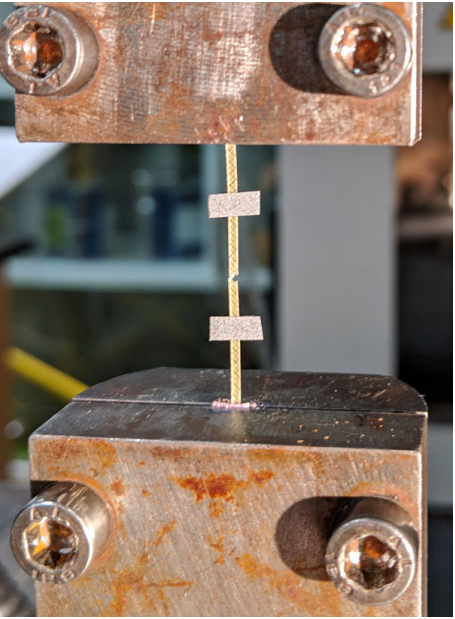Size Effects of Defects in Composite Structures
Researchers
Serena Ferraro
Sergio Pellegrino
Description
The known scaling trend for brittle materials, in which the strength increases when the sample size decreases, is reversed in plain-weave laminates of Astroquatz® and cyanate ester resin. Deployable thin shell structures in which cutouts are introduced to facilitate folding. The strain distribution near cutouts of such structures, shows small regions of very high strain but previous studies have not analyzed the effects of these high strain concentrations in detail.
Effect of scale on stiffness and strength of solids is a problem of continuing research interest. Both statistical approach based on Weibull distributions and fracture mechanics approach have been used to analyze scale effects on the strength of fiber-reinforced composite materials. The application of the statistical approach is based on the assumption that the larger the specimens will inherently exhibit a higher number of imperfections, causing a reduction in nominal strength.
The present study shows experimentally that the shear strength of 45 plain-weave Astroquartz® follows a different size-scaling trend than previously studied materials. Its initial trend is reversed to a decreasing trend for samples narrower than 15 weave wavelengths.
Samples with seven different widths, in the range 25 mm to 1 mm, were tested to characterize their stiffness and strength in shear, by loading them in tension at 45 degrees to the fiber directions. The measured shear strengths displays two different size-scaling trends. For widths of 25 mm to 15 mm the test data shows an increase in strength as the width decreases, following the general trend of theoretical and experimental studies of size effects on the strength of brittle materials. For widths of 15 mm to 1 mm the trend reverses and the shear strength decreases as the width of the sample is decreased.
Tension test setup, with 1.5 mm wide sample that has failed within the gauge length.
Shear strength scaling of [45PW/45PW] laminates. The strength of the pure cyanate ester has been plotted for the reference.
Publications:
Ferraro, S. and Pellegrino, S. (2021). Size effects in plain-weave Astroquartz deployable thin shells. To appear in Journal of Composite Materials


![Shear strength scaling of [45PW/45PW] laminates. The strength of the pure cyanate ester has been plotted for the reference.](https://images.squarespace-cdn.com/content/v1/56140fe6e4b0f59e845848e9/1608670172400-15B68ZYWQM51D4OVGV7R/fig1.png)

